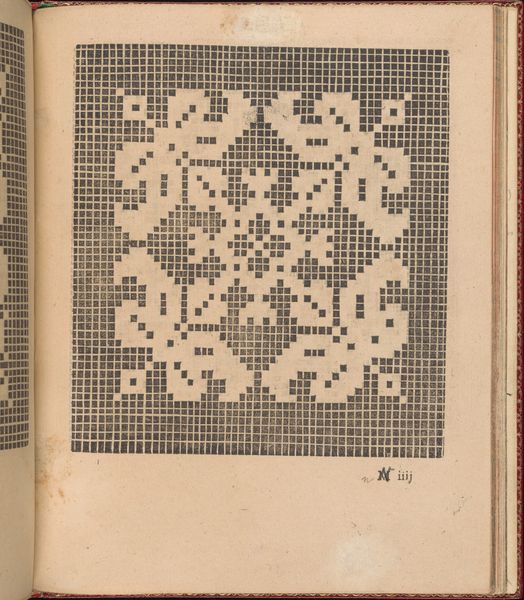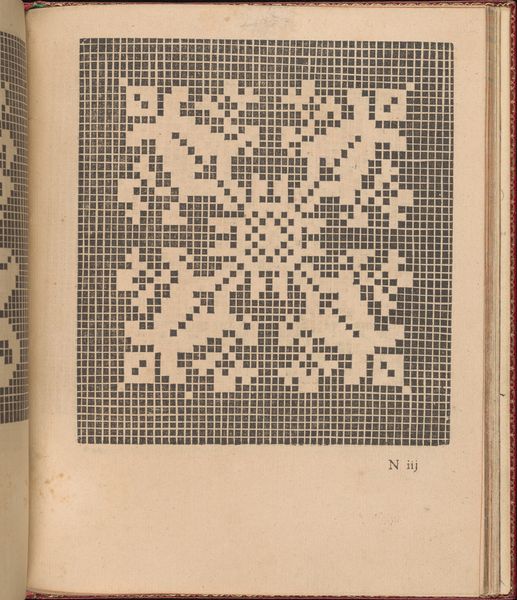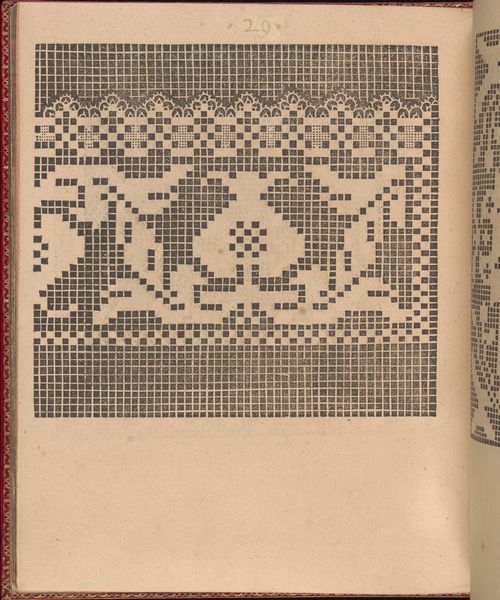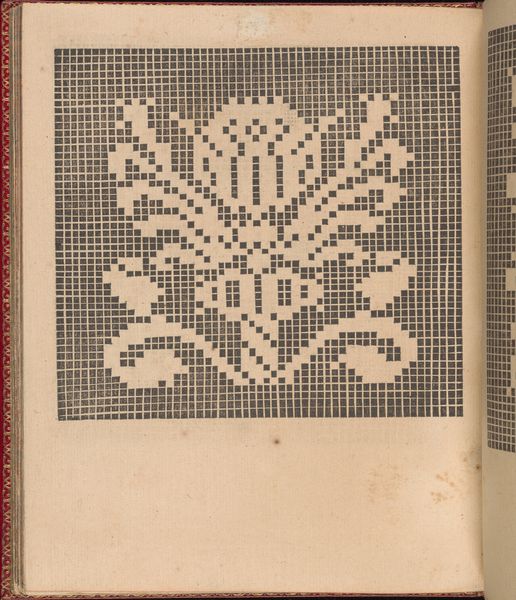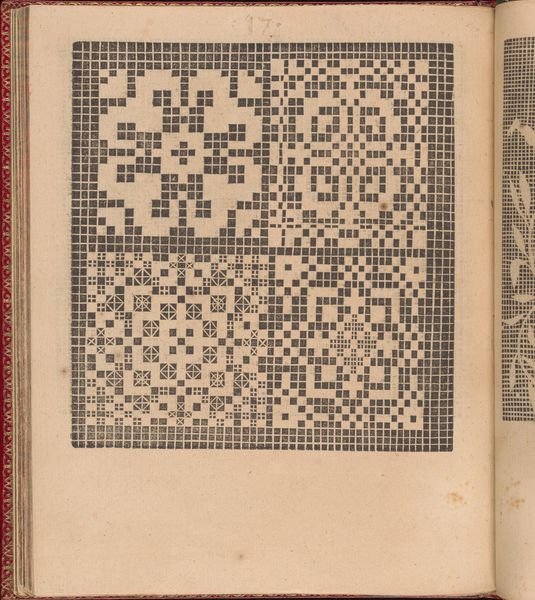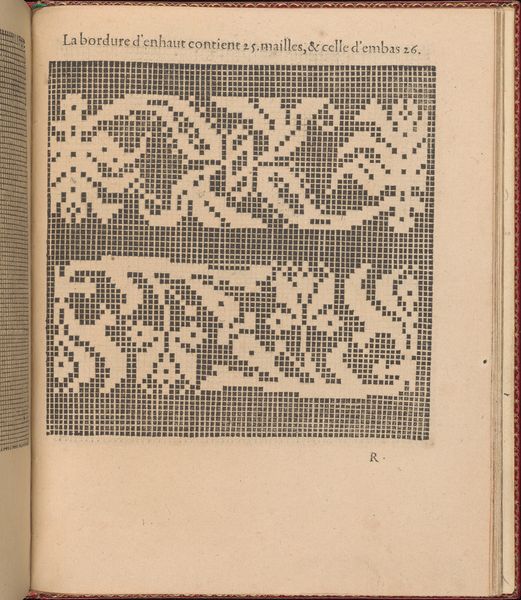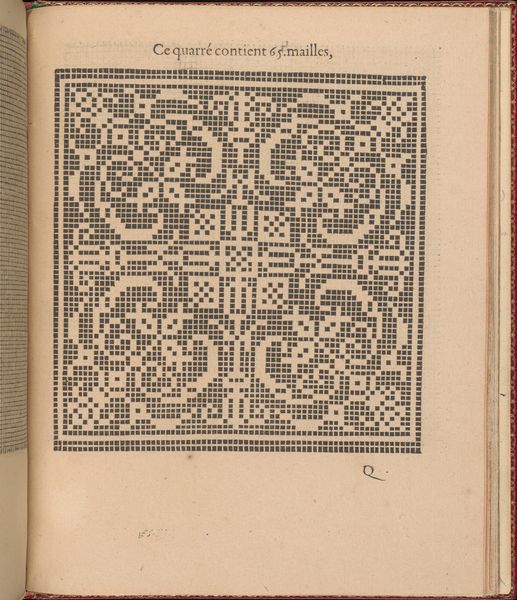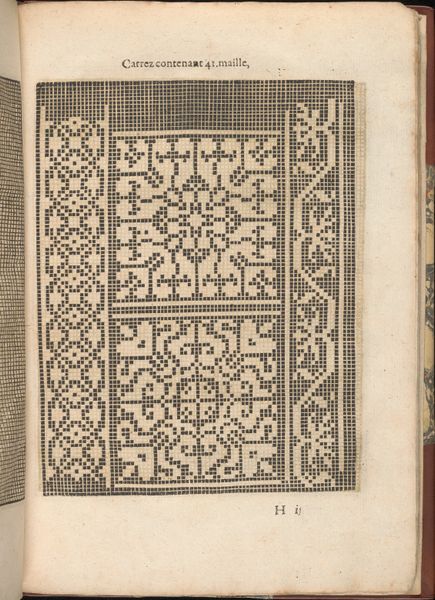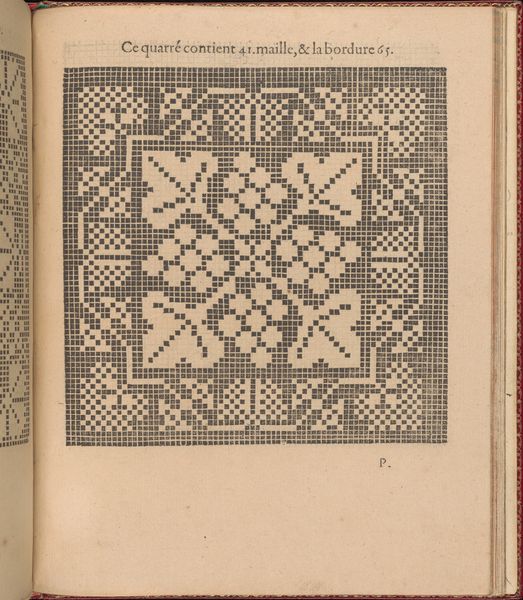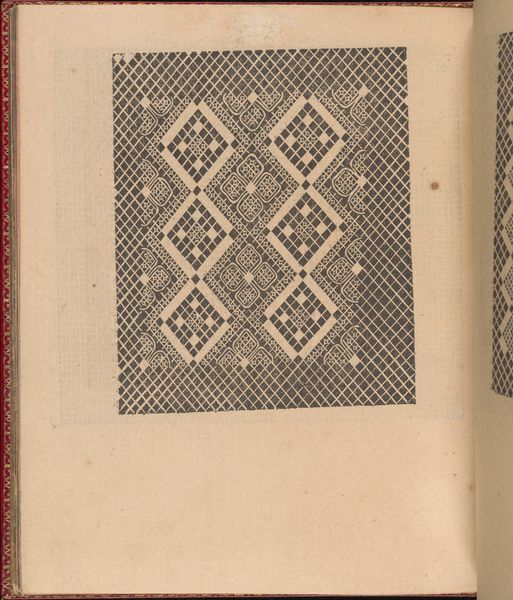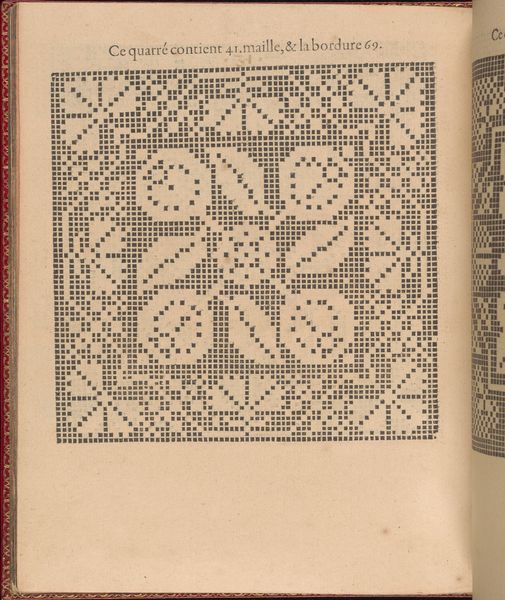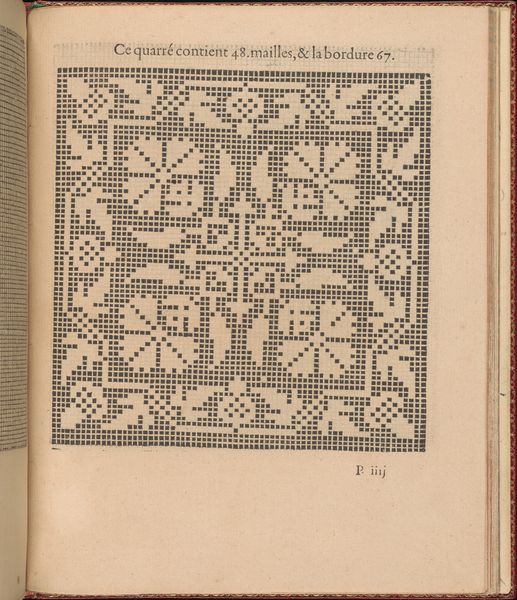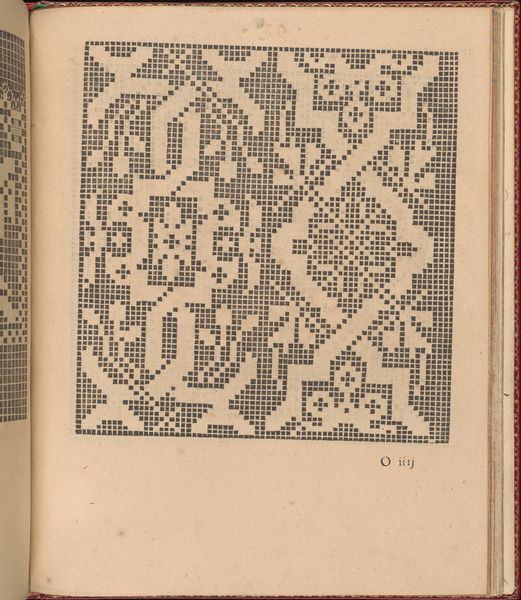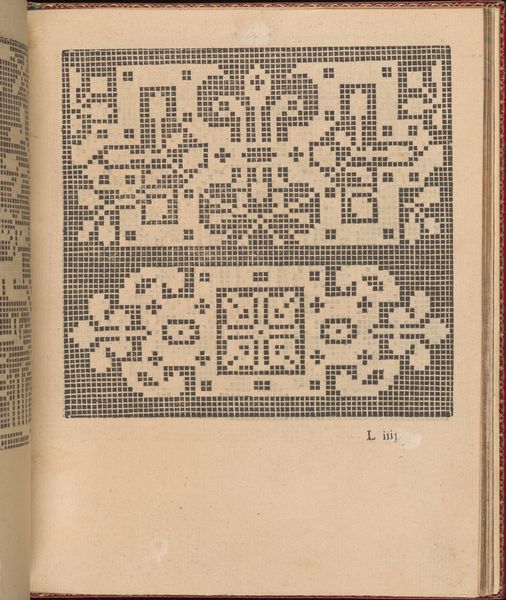
Les Singuliers et Nouveaux Portraicts... page 51 (verso) 1588
0:00
0:00
drawing, graphic-art, print, paper, engraving
#
drawing
#
graphic-art
#
medieval
# print
#
book
#
paper
#
geometric
#
decorative-art
#
engraving
Dimensions: Overall: 8 1/16 x 6 5/16 in. (20.5 x 16 cm)
Copyright: Public Domain
Editor: So, this is a page from "Les Singuliers et Nouveaux Portraicts...", created in 1588 by Federico de Vinciolo. It's an engraving, a print on paper, and the entire design is based on a geometric grid. I'm really drawn to the almost pixelated appearance, which feels surprisingly modern, though it's from the late 16th century. What do you see in this piece? Curator: Indeed. I see a convergence of mathematics and artistry, a coded language woven into a decorative pattern. Think of it: each square carries the potential for infinite variations, yet the artist chooses this particular arrangement. Why? What story does this chosen combination of symbol units want to convey? Is it merely decorative, or does it hold a cultural key we have yet to unlock? Editor: A cultural key... that's fascinating! The idea that even something seemingly simple could hold so much meaning. Are there particular symbols that stand out to you? Curator: Note the recurring motif of the spiral, carefully constructed with individual square blocks. The spiral, across cultures, often represents growth, evolution, the cyclical nature of life. Its presence suggests a deeper engagement with the viewer, an invitation to ponder. Look closely...do you also detect how negative and positive space, lightness and darkness, interact to subtly direct our gaze? Editor: Now that you mention it, I do see how the light areas draw my eye into the darker, more dense parts of the design, creating a continuous loop almost. Curator: Precisely! It reinforces this sense of the cyclical. So much packed into this diminutive medium. Think too, about the societal value placed on geometry and pattern making within book production at that time. Such prints may reflect ideas of education, memory, skill and dedication. Editor: It makes me consider what "pattern" meant back then versus now. Thank you! I'll never look at decorative art the same way.
Comments
No comments
Be the first to comment and join the conversation on the ultimate creative platform.
